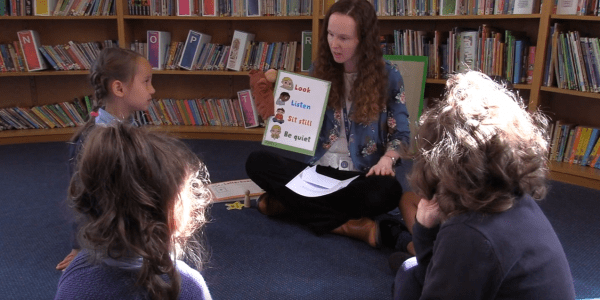New research examining how parents choose secondary schools, questions England’s ‘success rate’ for admissions and suggests the ‘good news’ revealed this week may not tell the full story. The research shows the system could, easily and cheaply, be made to work better.
The new report, published today by Lancaster University Management School and funded by the Nuffield Foundation, suggests that while allowing fewer choices enables local authorities to show that high proportions of children will be attending their first choice school, this is a hollow achievement if first choices are not a good reflection of true preferences. Currently, around half of local authorities in England allow parents to rank no more than three schools which, authors say, forces parents to think strategically when listing their choices. London families can list up to six schools.
Using 2014 National School Preferences (NSP) data and detailed records on pupil and school characteristics from the National Pupil Database (NPD), the researchers are the first to take a close look at how parents list rank schools – to investigate the importance of school quality, school proximity, and the probability of getting admitted. They investigate how different types of family, differentiated by ethnicity, income, and their child’s ability, choose the schools they apply to – and the resulting admission decisions.
In the 2014 data studied, 35% of parents listed only one choice; only 27% made as many choices as they could and 39% put their local school at the top of their list. The authors say that some parents are playing very safe and second guessing other parents’ decisions due to the limited schools they can list, whereas some simply are safe because they live near to the school they really want to attend. Interestingly, the data also reveals just 55% of parents included their local school as one of their choices – suggesting widespread dissatisfaction with neighbourhood schools.
The research also highlights important inequalities in access to chosen schools in England. Minority ethnic families are 17% less likely to achieve their first choice school – and the data suggests this is more of an issue for Black families, than Asian or other minority groups. Interrogation of the data suggests this is driven by ethnic minority parents putting greater weight on school quality than British white parents. Minority ethnic groups are, on average, willing to travel 21% further for a school that performs 10 % better (in terms of their 5+ GCSE pass rate) than white parents who are only prepared to travel an average of 11% further.
Parents of brighter pupils (those in the top third of the year 6 Key Stage 2 tests) also place a (50%) greater weight on school quality, than the families of children in the bottom third. However, minority ethnic children who are high performers at Key Stage 2 are less likely to be admitted to the secondary schools on their rank order lists than the children of white British parents. Living in areas with limited numbers of good schools, and the nature of school admission criteria at the most in-demand schools, such as faith schools, could be contributing factors.
The study also found that:
- Minority ethnic families use a considerably larger number of the preference choices open to them, on average. If minority ethnic parents rank higher-quality and therefore more popular schools, this is part of the explanation of why they are the least likely to get their first choice of school.
- White families who do not qualify for free-school meals make more cautious (i.e. closer) choices, and are less likely to choose high quality schools if the chance of admission is low.
- Families living in London are less likely to get into their top choice school than non-London families – but because they get to list six choices they may look for longshots that may be further afield.
Professor Ian Walker, an education economist from Lancaster University Management School, said: “By disentangling parental choices from admission criteria, we find that the system is a lottery for many. Parents, faced with a limit on the number of schools that they can list, have to think strategically and take into account the behaviour of other parents. As a result, many act conservatively. Failing to be conservative might result in attending a school that has capacity – because its unpopular with other parents too.
“Our analysis suggests that some groups of parents would have a greater chance of achieving a good school for their children if they were allowed to rank more schools. Extending the length of lists that parents are able to specify is a simple and cheap intervention for local authorities to implement. Our results found that this would also bring the most benefit to minority ethnic families who are currently faring worse.”
The findings of the research could, the authors suggest, be used by local authorities to create an algorithm that helps parents make the best choices from the surrounding schools, whatever their quality.
“Parents need easier access to more detailed information to make more informed school choice decisions,” Professor Walker said. “When we choose a flight or a hotel, we expect to be presented with clear information on the cost and benefits of our options to help us make informed choices. But, when it comes to school choices, local authority websites are bereft of information. By better using technology to inform and guide, they could easily and cheaply empower parents to make better choices. It’s a good time to do this – it would be a very cheap way of levelling up at a time when school capacity is getting tighter.”
We welcome this research which shows that the secondary school admissions system can be improved relatively easily and cheaply by local authorities to reduce inequalities faced by minority ethnic groups. Allowing parents to list more schools and providing them with better information can make the system fairer and more transparent. By encouraging parents to list their ‘true’ preferences, local authorities would have more accurate data on the real popularity of schools, which could lead to better local decision-making regarding capacity and school improvement.”Ruth Maisey, Education Programme Head at the Nuffield Foundation


















































